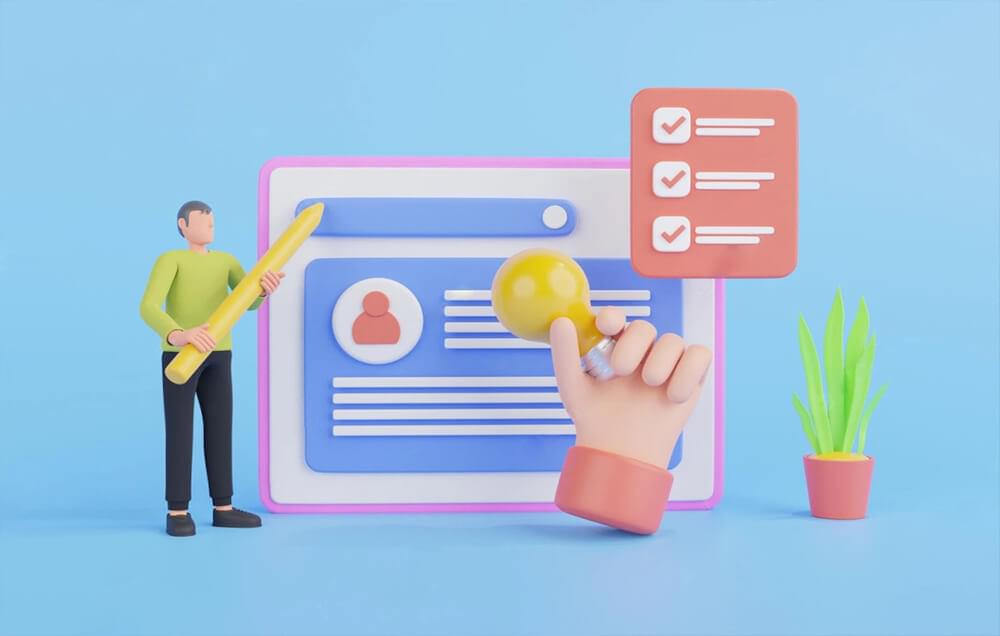accessibility tutorials
5 Best Tips to Create a Brand Identity
With millions of businesses being online striving hard to build a name for themselves, creating a powerful brand identity has become important for businesses to stand out their identity from their rivals.
If you are struggling to build a unique identity for your business, it is important for you to understand how to create a strong identity. The read of this blog will help you know strong brand development examples, methods and strategies.
What is brand identity and how to create one?

Brand identity is mainly about two things: your business’s core values and the promise you make to your customers. And identity is the core value of your business and how you communicate your business message with employees and your clients.
The idea of the brand springs up from the reference where the cattle ranchers were marked “branded”. It evolved as just a name or symbol. You can call a brand typically a name, symbol, tag line, logo, design, and brand voice. Your brand also identity are about the impression you leave on your team and clients.
Why is brand identity so important for your business?
Brand identity is the process of shaping up and strengthening this impression. The entire embodiment of your business and all the efforts you make for your business can inspire your clients and increase their loyalty. Therefore, brand identity is a significant factor for your business.
Brand identity is not just its logo. However, the big name in business and famous multi-national companies replicates their logos to enhance their business’s unique element and brand identity.
Six essential components help you build a strong brand identity.
1. The “Face” of Your Business
For all business and non-business matters, your business logo is the face of your business. Therefore, the face of your business should contain powerful meaning other than just looking cool or interesting.
Logo contributes greatly to enhancing brand identity. A logo is something that is going to imprint on customers’ minds for a longer period. The more meaningful the logo is, the more memorable it becomes.
A meaningful logo is a face value to your business, but the real value is gaining the trust of your employees and clients.
2. Credibility and Trust
Your products do not become memorable by just their appearance or beauty. They become extraordinary because of the usefulness, usability, and value it offers to people’s lives.
Building strong credibility and trust in the marketplace will give you a real boost and earn customers’ loyalty. It would be best if you put greater efforts into increasing this trust and credibility by bringing value to people’s lives through your products.
3. Advertising Impressions
How me greater your logo and value your products offer. Your brand identity still depends on the ways you advertise your business message. Whether you choose print advertisement or digital marketing platforms—your brand needs to be heard well.
The real tip is—advertise your brand with goodwill and a positive message to your audience, so they can take a good impression of your brand and products.
4. Your Company’s Mission
One crucial factor that enhances the brand identity is the company’s vision and mission. Their vision and mission may not be greater for startups, but they can strengthen their business mission with time. No matter how far you strengthen your business, your vision should stand with your every business decision.
To illustrate, a brand who sells Log out Tag out stations declares that their mission is to provide reliable and sturdy lockout tagout products and safety equipment to assist in industrial safety needs, with a focus on giving peace of mind to their customers when working in potentially dangerous conditions. This is evident in the wide range of products they offer such as Breaker locks, Lockout Tagout kits, circuit breakers, push button lockouts, lock boxes, etc. that align with their mission and are designed to meet the industrial safety needs of their customers.
In conclusion, the example provided exemplifies the importance of adhering a company’s vision and mission with their business decisions in order to enhance brand identity. By staying true to their initial purpose and maintaining consistency in their actions, a company can effectively strengthen their brand and build trust with their customers.
5. Generating New Customers and Delighting Existing Ones
Having a business face, building trust and credibility, a more robust vision and mission are essential factors—the real business is to attract new people and satisfy the existing clients. In the beginning, in the middle, and in the end, you are valuable customers are real entities to make your business stand.
A good product can bring good customers, but a good brand can generate loyal advocates. Creating a brand identity is a slow process, but it yields good results in the longer run. Knowing what brand identity is one thing, but implementing brand identity is another story.
How to Create a Brand Identity
When it comes to business, the first step is always about knowing your audience.
- Research your audience, the value propositions, and the competition.
- Design your unique logo and templates for your website.
- Choose a brand language to deliver a business message, connect, advertise, and embody on social media platforms.
- Know the limitations and the things you need to avoid.
- Continuously monitoring the growth and stability of your brand identity
Research your audience, value proposition, and competition.
Beginning, middle, the end are all about focusing on your audience. The first and foremost step towards creating a brand identity is conducting in-depth research on your audience’s desires, needs, and problems.
1. Who is your audience?
Different people want different things. You cannot target CEOs and C-suits teams the way you target students or younger audience. Therefore, understanding what your audience wants from your business and products is very important to take meaningful actions about your business.

2. Value Proposition & Competition
Knowing the difference between the value proposition and competition is crucial to developing a solid brand identity because it helps you make the best business decisions. It helps you to make timely decisions about your products and business. It helps you to take meaningful actions to satisfy customers.
Competition is a vital force that helps you understand how you can more meaningfully help your audience than your competitors. Therefore, educating your audience in a way that they see your brand and products can give them value.
In this way, you just don’t bring customers to your platform, but make them stick to your products for longer.
3. Mission
Delivering clear communication on the mission is very important to influence your employees and customers.
With everything being online, it has become easy to advertise a positive message about your brand and products. Therefore, you cannot neglect the option of not promoting your business personality and goals to your audience.
Your audience is watching all your steps on what you deliver on digital platforms. Therefore, convert their attention into permanent loyal advocates.
4. Personality
Every online business is very important to maintain your unique brand personality. Brand personality stands out with the type, color, language, and imagery you use for your brand. Make sure all stands unique and has great symmetry with your brand message.
There are so many things the people in business tend to forget and avoid when it comes to building a unique brand personality. Such as unique images that have a great story to tell about your business. If you follow other stories to design your images, your brand won’t have a unique perspective to offer to your audience.
5. SWOT Analysis
Eventually, SWOT analysis is beneficial for understanding the in-depth value of your brand. It helps you to find out the characteristics that would help you portray your brand in a better way.
What does SWOT analysis stand for?
- Strength: it’s all about the positive traits of your business that offer an advantage over your competitors.
- Weakness: it’s all about the weak traits of your business that help you diagnose roadblocks and bottlenecks in your business.
- Opportunities: the need to adopt the change and new trends in the industry to find and grow more opportunities for your business.
- Threats: it includes all the elements, either environmental, political, or social, that may harm your business.
Design the logo and a template for it.
Logo, templates, and design bring your brand to life. Design is the silent ambassador, yet can speak to your audience in many meaningful ways.

1. Logo
The logo is not the complete entity to represent your brand identity. However, it stands its vitality in creating a strong branding personality for your business. It is the most recognizable and unique part of your brand. It’s both the name and face of your business. It goes everywhere with your products, website, business cards, social media platforms, and digital advertisements.
2. Interesting Form
Product packaging is the element that is also important, along with the logo. The way you represent your products and services also plays a crucial part in building brand identity. Representing the brand identity through visuals creates consistency and familiarity for your customers. If we take examples of McDonald’s golden arches and the biggest M. It is recognizable worldwide. So the goal is to design your logo and packaging to make your brand recognizable.
3. Color & Type
Choosing a unique and influential color seems the tricky and challenging part. Choose the color that should focus on enhancing your identity. One easy way to select colors is by picking the colors closely related to your business’ niche. For example, baby products usually use soft colors, the softer shades of blue, green, yellow, and pink. Use bold and attractive colors for products you are selling for teens or students. Use decent colors yet attractive or with the tint of boldness to market products for middle-aged or older people.
Choosing fonts for your business identity is also a tricky part. Choose a type whose typeface is cool and closely related to your disease or design logo. But choosing the same font for your website, digital ads, and media prints is unnecessary. You can always mix and match to make it stand out.
4. Templates
Templates for sending out newsletters, emails, business letters, and business cards to your potential customers daily are very much necessary. Creating a unique template that closely represents your business image is very important. Make sure you choose a unified, credible, reasonable template that offers professional looks and feels.
5. Consistency
Consistency is the key to the success—it can create and break the identity of your brand. Whatever your efforts are to create a brand identity, it won’t be fruitful if they are not consistent.
6. Flexibility
Yes, consistency is significant — but staying flexible in a world that is always looking for the next best result is just as crucial.
Flexibility offers adjustments in marketing campaigns, tag-lines, and revamping your overall business identity so you can continuously keep your audience engaged. The key is bringing consistency throughout your entire brand.
7. Document
One of the wisest ways is to document all business guidelines and message for your employees and clients. You can document all do’s and don’ts and make a guidebook of the language you can use to represent your brand while avoiding several jargons, stereotypes, cliches and culturally sensitive words. Many enterprises use their guide books to empower their clients and employees.
Integrate language you can use to connect, advertise, and embody on social media.
Now that you’ve established your brand within your company and have taken all the necessary steps to develop it, you’re ready to integrate your brand within your community.

1. Language
Language is the road map to many greater things, especially in business. Visuals play their role in creating a long-lasting impression, but it’s the power of language that influences the masses. It is very significant to say that language should match your brand’s personality. The language you pick to use as a brand helps you integrate throughout the entire business, so it’s significant that you carefully craft your tone to match your business personality. If your business identity is high-end, use professional language; if your brand is laid-back, be more conversational.
A-pro-tip: Language is not just in text form; words can speak out in any way you want them to be heard. Here, we mean, give a beautifully influencing voice to your words. Give your audience the faculty to listen to all text-based information on your digital platforms. So, they have a greater chance to utilize every important piece of information with no hassle.
People find it easy to listen instead of reading—as they have other important tasks to be done while listening to their favorite piece of content. WebsiteVoice is enterprises’ choice to convert the bulks of content into audio. It’s a good audio-generating tool with greater features, audios in different languages, multiple choices when picking accents and voice, customization features, and much more.
2. Connection & Emotion
People love to be heard. Therefore, they love to tell stories. More precisely, people love to tell stories that move them. A strong business identity can develop an emotional connection with consumers, which can be a solid base for developing a lasting relationship with your business.
3. Advertise
Designing ads, whether traditional or digital, is the most efficient way of introducing your brand to the world. It’s a way to get the message of your brand seen and heard by your target audience.
4. Social Media
Another great way to establish a connection with your consumers is through social media. The plethora of platforms on the internet offers up a ton of digital real estate you can use to establish your brand identity. Coca-Cola, once again, makes great use of its Facebook cover photo real estate by keeping it consistent with the happiness theme.
Social media is also important when it comes to conversing directly with your customers and creating affinity for your brand. If you’re mentioned in a tweet, status, or post (especially if the customer has a question or concern), be sure to give your brand a good reputation by responding efficiently to your customers.
Know what to avoid in creating a successful brand
You can follow all the steps of creating a strong brand identity, but if you’re guilty of any of the following practices, your brand might falter or fail.
1. Don’t give your customers mixed messages.
Know what you want to say, and use the appropriate language and visuals to say it. Just because it makes sense to you doesn’t mean it will make sense to your customers.
2. Don’t copy your competitors.
Your competition may have exemplary branding, and since you’re selling the same products or services, you might want to do what you know works — don’t. Take what they do into account, and put your own twist on it to make your business stand out in your industry even more.
3. Don’t lose consistency between online and offline.
Yes, your print material might look a little different than your online presence, but your colors, type, theme, and message should all be consistent.
4. Scale, don’t sacrifice.
Going with the flow and chasing the change that is upon us—is always advised. But don’t chase the trends that have nothing to do with the welfare of your business.
Monitor your brand to maintain its brand identity.
Similar to other aspects of your marketing, it’s difficult to know what you’re doing right (and what you’re not) without tracking key performance metrics.
Use Google Analytics, surveys, comments, social media discussions, etc., to monitor your brand and get a sense of how people talk about and interact with you. This will give you the opportunity to implement changes to your brand as needed — whether it’s to correct a mistake or to improve brand identity.
The Bottom Line
The journey of creating a brand identity goes on forever. Most of the steps are traditional, and people have been following them for decades. What’s new? Your business decision to go beyond and adopt the new normals the advanced technology offers you.
- Don’t rely on text-based information only—use audiovisuals.
- Blogs don’t have to be text-based— choose to give voice to meaningful information.
- Try audio technology to automate your tasks—especially the ones that are important to boost your business identity—create content almost every day because it has become super easy with advanced content-generating tools.









